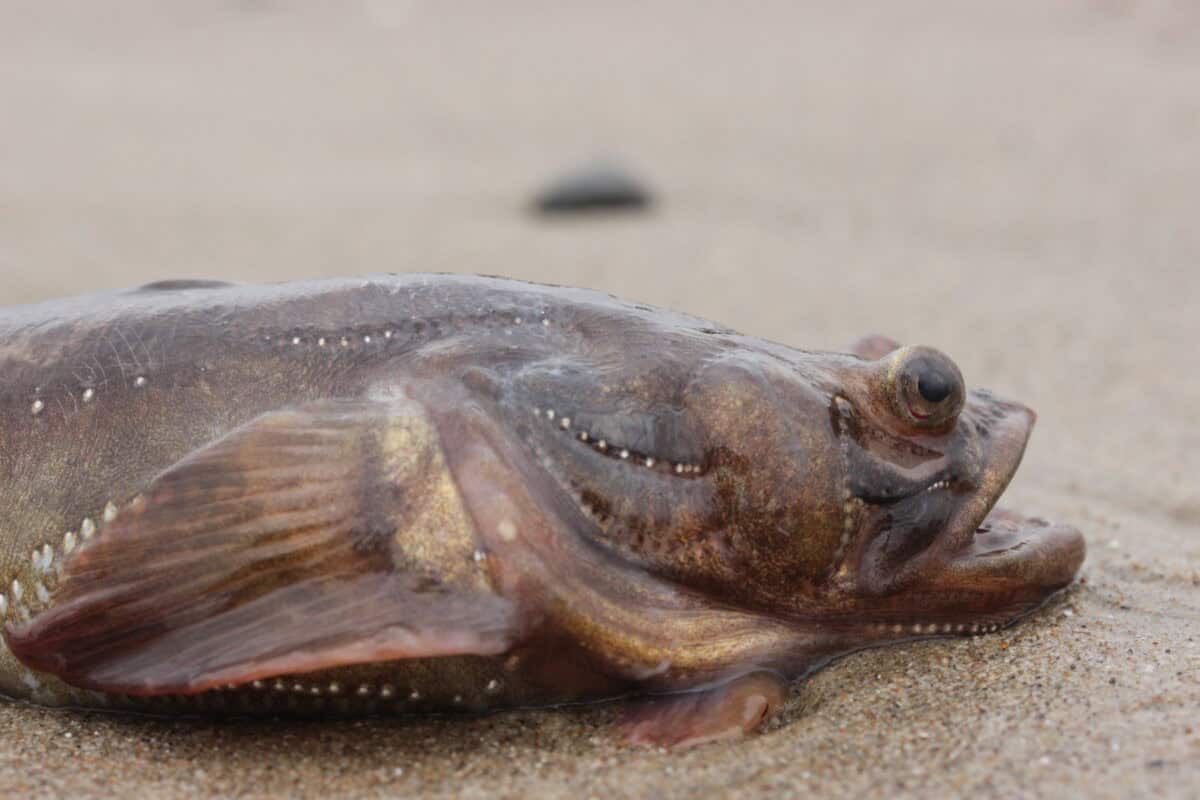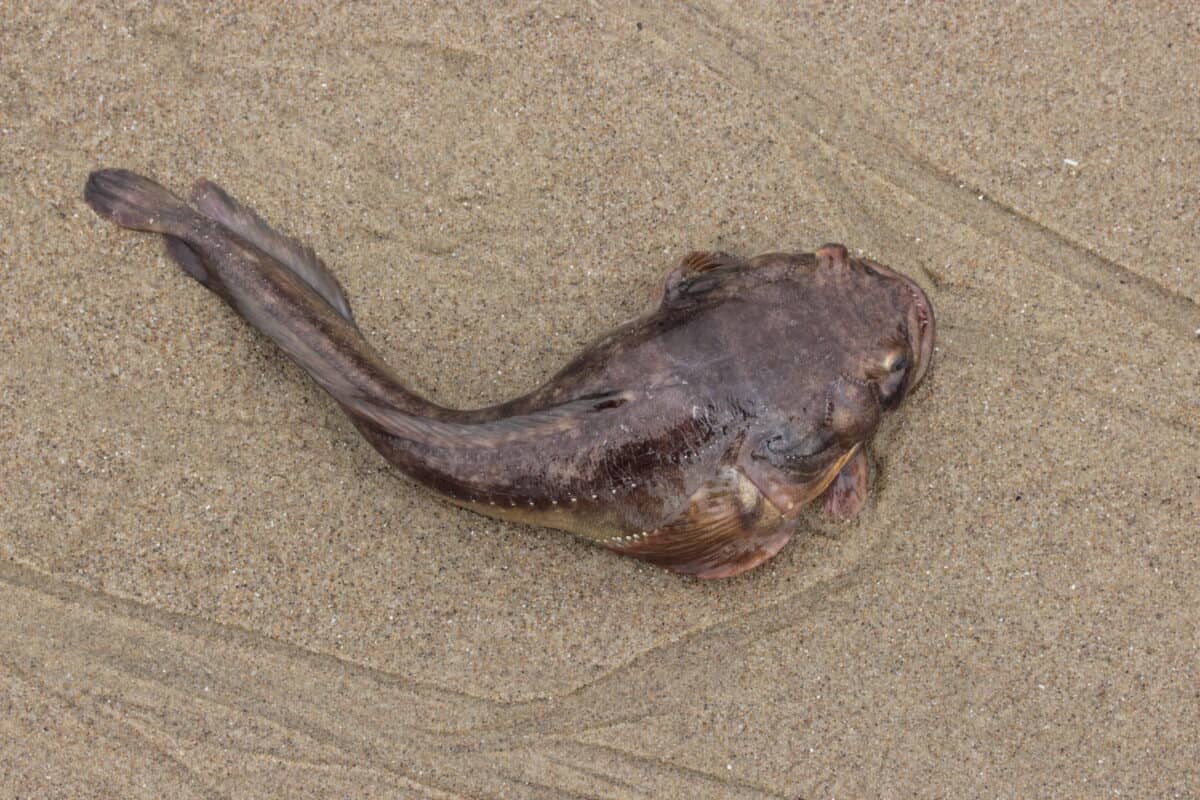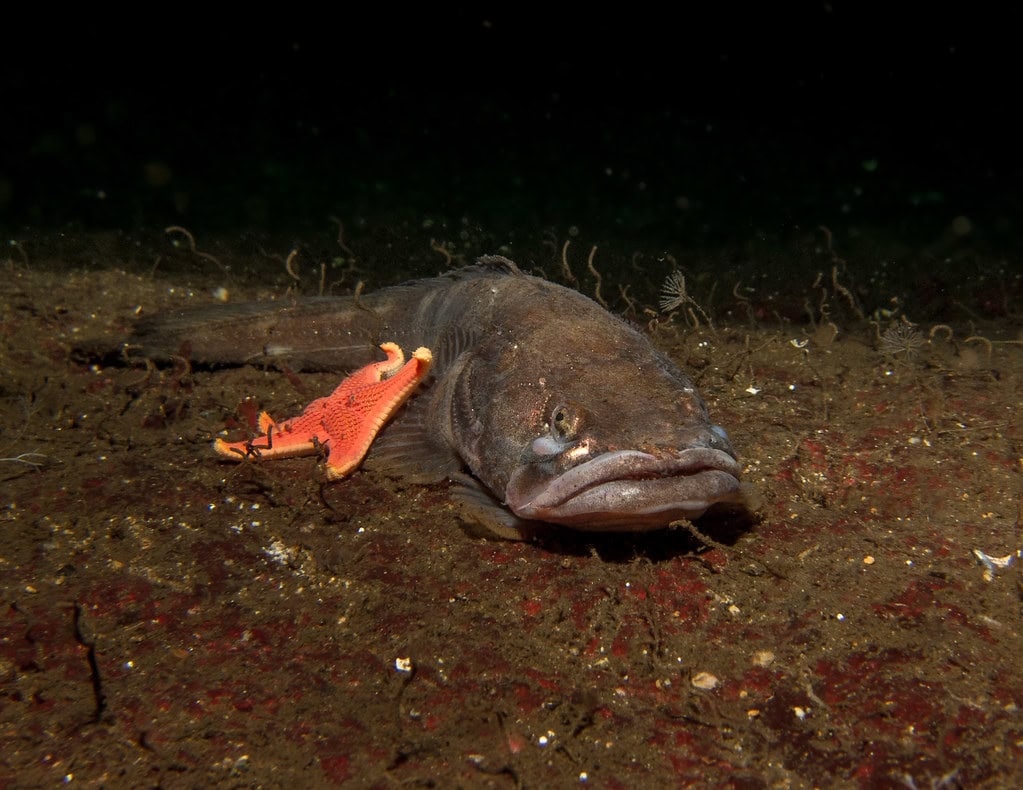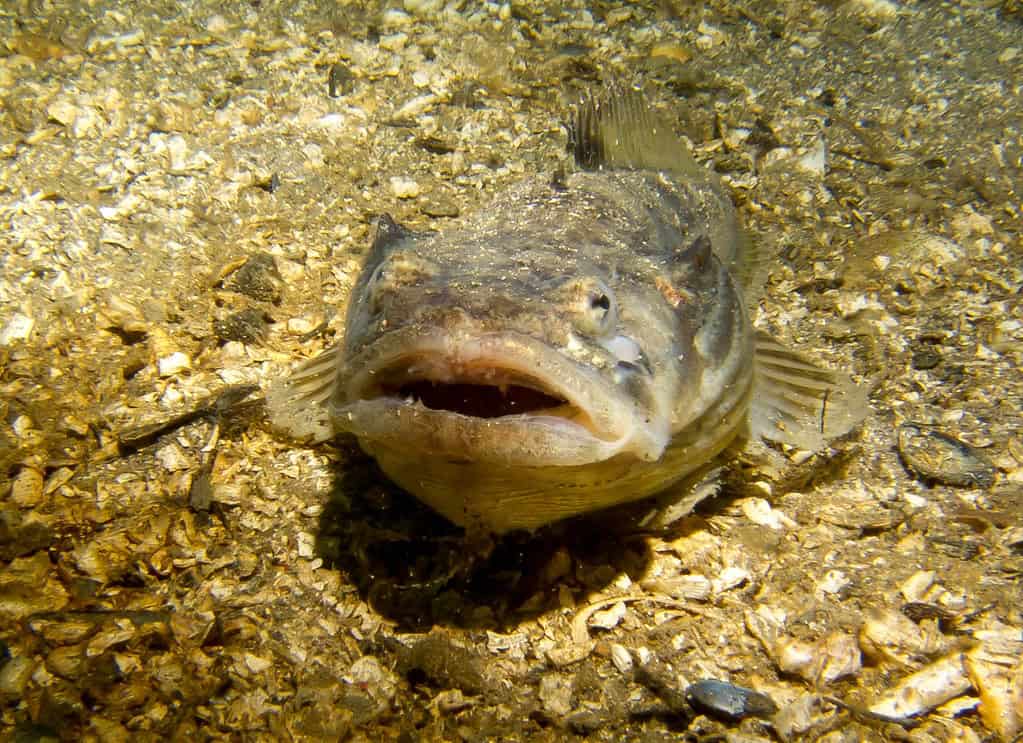In the murky depths off California’s coastline, scientists have made a remarkable discovery that challenges our understanding of marine communication. The plainfin midshipman fish (Porichthys notatus), a seemingly unremarkable bottom-dweller, has revealed itself to be nature’s underwater vocalist. This nocturnal creature, native to the Pacific Ocean from Alaska to Baja California, produces a distinctive humming sound so loud it can be heard by humans on land. The revelation has opened new avenues of research into marine bioacoustics and highlighted the complex communication systems that exist beneath the waves. Let’s dive deeper into the fascinating world of California’s singing fish and the scientific discoveries surrounding this unusual marine musician.
The Unexpected Underwater Vocalist

The plainfin midshipman fish doesn’t look like a natural performer. With its flat head, bulging eyes, and mottled brownish body, this nocturnal creature spends most of its time hidden on the ocean floor. However, appearances can be deceiving. Male plainfin midshipmen possess specialized muscles attached to their swim bladder that vibrate at rapid speeds to produce a distinctive humming sound. This vocalization is primarily used during breeding season, creating a chorus that has bemused coastal residents for generations before scientists identified the source. The fish’s nickname “California singing fish” reflects its remarkable vocal abilities, which can continue uninterrupted for hours, especially during night hours in the late spring and early summer months.
Scientific Discovery and Historical Context

While coastal communities have long reported strange humming sounds emanating from certain bays and harbors, it wasn’t until the 1980s that scientists definitively linked these sounds to the plainfin midshipman fish. Dr. Margaret Marchaterre and Dr. Andrew Bass of Cornell University were among the pioneering researchers who documented this phenomenon scientifically. Initially, the sounds were often attributed to mechanical sources like boats, underwater machinery, or even submarines. Native American communities along the Pacific Coast incorporated the mysterious sounds into their folklore long before scientific explanation was available. The confirmation that these sonic disturbances came from a small, unassuming fish came as a surprise to the scientific community, prompting further investigation into the mechanisms and purposes of fish vocalizations.
Anatomical Adaptations for Sound Production

The plainfin midshipman’s vocal abilities stem from specialized anatomical adaptations. The most notable feature is the sonic muscle, which is attached to the fish’s swim bladder—an internal gas-filled organ that typically helps fish maintain buoyancy. In the midshipman, this bladder serves a dual purpose as a resonating chamber. When the male fish contracts its sonic muscles at remarkable speeds—up to 100 times per second—it causes the swim bladder to vibrate, producing the characteristic humming sound. This muscle is one of the fastest-contracting vertebrate muscles known to science, requiring significant energy expenditure. The fish also possesses neural adaptations that allow for the control of these rapid muscle contractions, including specialized motor neurons and hormonal regulation systems that activate during breeding season.
Mating Songs and Reproductive Strategy

The primary purpose of the plainfin midshipman’s vocalizations is reproduction. During breeding season, typically from late spring through summer, male midshipmen migrate from deeper waters to intertidal zones to establish nesting sites under rocks. Once settled, they begin their nocturnal concerts, humming continuously for hours to attract females. This humming serves as an underwater advertisement of the male’s fitness and territory quality. Researchers have identified different types of male midshipmen, including the vocal “singing” type and a “sneaker” type that doesn’t hum but attempts to fertilize eggs in nests guarded by singing males. The females, drawn to the most persistent and resonant singers, will deposit their eggs in the nest of their chosen mate. The male then guards the eggs until they hatch, continuing to vocalize to defend his territory from competitors.
The Science of Fish Communication

Plainfin midshipman. Image by Openverse.
The discovery of the midshipman’s vocal abilities has significantly expanded our understanding of fish communication. Unlike mammals, which produce sounds through their larynx, or birds with their syrinx, fish have evolved diverse mechanisms for sound production. The midshipman’s swim bladder method is just one example of acoustic communication in aquatic environments. Scientists have documented over 800 species of fish that produce sounds, from the grunting toadfish to the clicking seahorse. These vocalizations serve various purposes beyond reproduction, including territorial defense, predator deterrence, and group coordination. The plainfin midshipman has become a model organism for studying the neurobiology of vocal communication, providing insights that may apply across species, including humans.
Research Methods and Technological Advances

Studying underwater acoustics presents unique challenges that scientists have overcome through innovative research methods. Hydrophones—underwater microphones—allow researchers to record and analyze the midshipman’s humming pattern, frequency, and amplitude. Advanced recording equipment can detect these sounds from significant distances, helping map the distribution of singing populations. Laboratory studies complement field research, with scientists examining the fish’s neurological and muscular responses under controlled conditions. Some researchers have even created artificial underwater speakers to play back recorded hums and observe female responses, confirming that specific acoustic qualities influence mate selection. Recent advances in underwater drone technology have further enhanced observation capabilities, allowing scientists to monitor fish behavior without disrupting their natural activities.
Environmental Factors and Vocalization

Environmental conditions significantly impact the midshipman’s singing behavior. Water temperature, lunar cycles, and tidal patterns all influence when and how intensely the fish vocalize. Research has shown that the fish sing most prominently during new and full moons when tidal movements are most extreme, facilitating nest-building in intertidal zones. Additionally, ambient noise levels affect their communication effectiveness. As coastal development increases and marine traffic grows, anthropogenic noise may interfere with the fish’s ability to communicate effectively—a concern for conservationists. Climate change presents another potential challenge, as shifting ocean temperatures could disrupt the seasonal timing of reproductive behaviors. Scientists are currently monitoring these environmental factors to better understand their impact on midshipman populations and broader marine ecosystems.
The Midshipman’s Unique Adaptations Beyond Sound

While the plainfin midshipman’s vocal abilities receive the most attention, these fish possess several other fascinating adaptations. Perhaps most striking are their bioluminescent photophores—light-producing organs arranged in rows along their ventral surface, resembling the buttons on a naval uniform (hence the name “midshipman”). These organs contain symbiotic bacteria that produce a blue-green light, helping the fish hunt and possibly communicate in deep, dark waters. Additionally, midshipmen can survive out of water for extended periods during low tide, using specialized gills that can extract oxygen from air. They also demonstrate remarkable parental care, with males guarding egg clutches for weeks at a time, fanning them with their fins to ensure proper oxygenation and removing debris to prevent fungal growth.
Cultural Impact and Public Awareness

The singing fish phenomenon has captured public imagination well beyond scientific circles. Coastal communities in California, particularly in areas like Sausalito and Tomales Bay, have incorporated the mysterious humming into local culture, even organizing listening events during peak breeding season. Some waterfront homeowners, however, have been less enthusiastic, reporting sleep disturbances from the constant nocturnal drone. The fish has inspired various artistic works, including documentary films, musical compositions, and literature. Aquariums along the Pacific coast have developed exhibits featuring the midshipman, educating visitors about marine bioacoustics and underwater communication. These cultural touchpoints have helped raise awareness about marine conservation and the importance of protecting coastal habitats where these unique vocalizations occur.
Comparative Studies with Other Vocal Marine Species

The plainfin midshipman isn’t the only vocal performer in the seas, and scientists have conducted comparative studies with other sound-producing marine creatures. Toadfish, close relatives of midshipmen, produce similar but distinct vocalizations, allowing researchers to examine evolutionary relationships in sound production. Marine mammals like whales and dolphins use more complex communication systems that involve learning—a cognitive ability not observed in the midshipman’s innate vocalization patterns. Even some invertebrates, such as snapping shrimp, produce sounds underwater, though through entirely different mechanisms. These comparative studies help scientists understand how acoustic communication evolved separately across different lineages and environments. The midshipman serves as an important reference point in this broader acoustic landscape, representing a relatively simple but effective communication system that has evolved over millions of years.
Conservation Concerns and Habitat Protection

While the plainfin midshipman isn’t currently listed as endangered, its habitat faces numerous threats that could impact populations. Coastal development, pollution, and climate change all pose challenges to the intertidal zones where midshipmen build their nests and perform their mating calls. Ocean acidification—a consequence of increased atmospheric carbon dioxide—may affect the development of midshipman eggs and larvae. Noise pollution from shipping, recreational boating, and coastal construction can mask the fish’s vocalizations, potentially disrupting mating success. Conservation efforts focus on protecting key breeding habitats through marine protected areas and monitoring population trends. Scientists advocate for noise reduction measures in critical breeding areas during peak season. Preserving the midshipman’s habitat not only protects this unique vocal species but also benefits the broader coastal ecosystem of which it is an integral part.
Future Research Directions

The discovery of California’s singing fish has opened numerous avenues for future scientific inquiry. Neurobiologists continue to study how the fish’s brain controls its vocalizations, seeking insights that might apply to human speech production and disorders. Behavioral ecologists are investigating how changing ocean conditions might affect breeding behaviors and acoustic communication. Geneticists are examining the genetic basis for the different male types—singers versus sneakers—to understand how these alternative reproductive strategies evolved and persist. Bioacoustic engineers are drawing inspiration from the midshipman’s efficient sound production mechanisms for applications in underwater communication technology. As research technologies advance, particularly in the realms of underwater observation and genetic analysis, our understanding of this remarkable species will undoubtedly deepen, potentially revealing even more surprising aspects of its biology and behavior.
Conclusion

The plainfin midshipman fish represents one of nature’s most fascinating examples of unexpected adaptations, transforming a seemingly ordinary bottom-dweller into California’s famous singing fish. Its remarkable ability to produce sustained vocalizations challenges our perceptions of fish behavior and expands our understanding of underwater communication systems. Through dedicated scientific research spanning decades, we’ve uncovered not just the mechanism behind these mysterious sounds but also their crucial role in reproduction and species survival. As we continue to study these underwater musicians, they remind us that the ocean still holds countless secrets waiting to be discovered, and that even the most unassuming creatures can possess extraordinary capabilities. The singing fish of California stands as a testament to nature’s ingenuity and the importance of preserving marine ecosystems where such biological wonders can continue to thrive and surprise us.
- Why Polar Bears Cover Their Black Noses While Hunting - August 15, 2025
- How Snakes Became a Central Theme in Chinese Zodiac Legends - August 15, 2025
- Can Animals Predict Earthquakes? The Science Behind the Mystery - August 15, 2025

